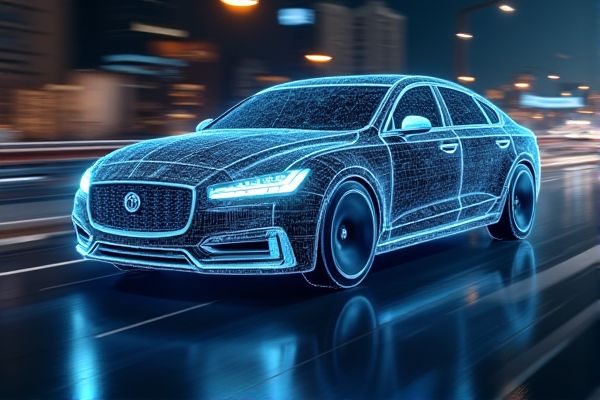
AI significantly enhances automotive technologies by improving safety through advanced driver-assistance systems (ADAS), which employ algorithms to detect obstacles and predict potential collisions. Machine learning algorithms optimize vehicle performance by analyzing vast amounts of data from driving patterns, enabling adaptive cruise control and real-time navigation improvements. Autonomous driving technology relies heavily on AI to process sensor inputs and make split-second decisions, ensuring smoother and safer driving experiences. Predictive maintenance powered by AI helps monitor vehicle health, anticipating mechanical issues before they become critical, thus prolonging vehicle lifespan and increasing operational efficiency.
AI usage in automotive technologies
Autonomous Driving Systems
The implementation of AI in automotive technologies enhances the functionality of Autonomous Driving Systems by improving safety and efficiency. Machine learning algorithms analyze real-time data from sensors to make quick driving decisions, reducing the likelihood of accidents. Companies like Tesla leverage these advancements to create more reliable navigation and obstacle detection systems. The potential for AI to optimize traffic flow and reduce emissions also presents significant advantages for urban planning.
Driver Assistance Technologies
AI in automotive technologies enhances driver assistance systems by analyzing real-time data from various sensors to improve safety. Systems like adaptive cruise control and lane-keeping assist exemplify how AI can reduce the likelihood of accidents. Increased integration of AI may lead to more efficient traffic management and reduced congestion. As manufacturers adopt these technologies, the potential for improved vehicle performance and driver comfort becomes more achievable.
Predictive Maintenance Algorithms
Predictive maintenance algorithms in automotive technologies can enhance vehicle reliability by assessing real-time data to predict potential failures. For example, a fleet management system could use these algorithms to minimize downtime for delivery trucks. Implementing such technology may lead to cost savings through reduced maintenance and improved operational efficiency. Companies like Tesla are already exploring these possibilities, showcasing a wider trend in the industry.
Vehicle-to-Everything (V2X) Communication
AI enhances automotive technologies by improving Vehicle-to-Everything (V2X) communication, allowing vehicles to interact with their surroundings. This capability can potentially reduce traffic congestion and enhance road safety by enabling real-time information exchange. The integration of AI algorithms can optimize routing and provide predictive maintenance options for connected cars. Companies like Tesla are exploring these advancements, offering opportunities for innovation in both vehicle performance and user experience.
Energy Management in Electric Vehicles
AI can enhance energy management in electric vehicles by optimizing battery performance and improving range. For example, algorithms can predict energy consumption based on driving patterns, which may lead to more efficient routes. Manufacturers like Tesla are investing in AI-driven solutions to extend battery life and reduce charging times. This technological advancement could provide a significant advantage in the competitive electric vehicle market.
AI-based Traffic Management
AI usage in automotive technologies can enhance vehicle performance and safety by optimizing operations through real-time data analysis. AI-based traffic management systems, for example, can improve traffic flow and reduce congestion by dynamically adjusting traffic signals based on current conditions. This integration may lead to decreased travel times and lower emissions, presenting an opportunity for cleaner urban environments. The collaboration between AI and automotive industries can pave the way for innovative solutions, making smart transportation systems more efficient.
Natural Language Processing for In-car Assistants
AI usage in automotive technologies has the potential to enhance driver experience significantly. Natural Language Processing (NLP) can improve in-car assistants by enabling more intuitive communication, allowing drivers to interact seamlessly with navigation and entertainment systems. For example, a system like Apple's CarPlay can respond more accurately to voice commands, reducing distractions. The chance of increased user satisfaction and safety emerges as these technologies evolve and integrate into daily driving.
Smart Manufacturing and Robotics in Production
AI has the potential to significantly enhance automotive technologies by improving safety features and optimizing manufacturing processes. In smart manufacturing, AI can analyze large datasets to streamline operations and increase efficiency, as seen in companies like Siemens. Robotics in production can leverage AI for tasks such as quality control and predictive maintenance, reducing downtime. The integration of AI across these domains presents opportunities for cost reduction and innovation in product development.
Enhanced User Experience through Personalization
AI integration in automotive technologies can lead to significant improvements in user experience by providing personalized features. For instance, advanced algorithms can analyze driver preferences and habits, adjusting settings such as climate control and navigation automatically. Companies like Tesla have begun exploring these capabilities, potentially increasing customer satisfaction and loyalty. Implementing personalized AI solutions may also offer opportunities for manufacturers to differentiate their vehicles in a competitive market.
AI-facilitated Supply Chain Optimization
AI usage in automotive technologies presents opportunities for improved safety and efficiency. For example, machine learning algorithms can analyze real-time data from vehicles to predict maintenance needs, reducing downtime. In supply chain optimization, companies like Toyota leverage AI to enhance inventory management and streamline operations. These advancements can lead to cost savings and better resource allocation, making businesses more competitive.
 techknowy.com
techknowy.com